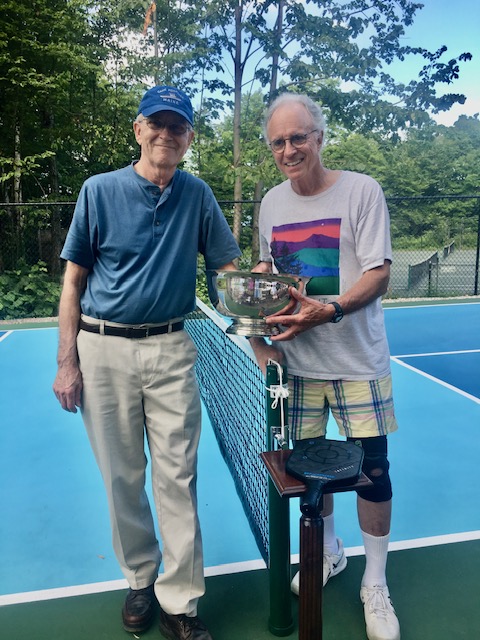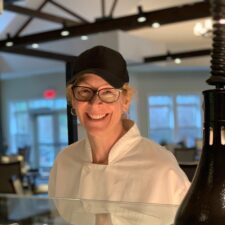Chris Duffy isn’t going to sugarcoat it: Making friends as an adult is hard. If you’ve ever tried to figure out exactly how to ask a potential platonic connection for their number—or word that first follow-up text—you know what he’s talking about. “It’s mortifying,” he says. “It requires being vulnerable and cringe-worthy and putting yourself out there.”
Social awkwardness aside, it’s simply harder to meet new people as an adult, when you no longer have shared high school classes or a college dorm room. Add in long work hours, a fear of rejection, and lack of trust, and it’s no wonder many people struggle to make new friends.
Yet despite these obstacles, investing time and energy into growing your community is unequivocally worth it. Friendships keep us mentally and physically healthy. Plus, “I think a lot of pressure gets put on your partner to be everything,” says Duffy, author of Let’s Hang Out: Making (and Keeping) Friends, Acquaintances, and Other Nonromantic Relationships. “There’s this idea that they’re supposed to be your creative inspiration and your sexual partner and the coparent to your kids, and also your best friend—but friends bring something that your spouse doesn’t. You can find parts of yourself and get inspired and have fun” by broadening your group of confidantes.
We asked Duffy and other experts how to approach making new friends as an adult, based on the life stage you’re into.
Early adulthood
Your 20s are the ideal time to start reflecting on your own friendship-making style—knowledge that will serve you the rest of your life. In part, that means figuring out whether you’re a joiner or an initiator, says Nina Badzin, who hosts the podcast Dear Nina: Conversations About Friendship. As a joiner, you’ll make it a point to proactively join activities or events you find interesting, like dance classes, a kickball league, or a professional networking group. If you’re an initiator, you’ll step up to organize get-togethers. “Maybe you invite two people, and those two people invite two people,” she says. Being a joiner and being an initiator both require a conscious effort; knowing which you are will help you determine the best approach to making friends.
You’ll likely meet lots of people at work—proximity fuels close bonds—and those connections can lead to other connections. “The acquaintance you made at this thing may stay an acquaintance, but maybe you meet someone through that person who becomes a friend,” Badzin says. “It takes time. In your 20s, you’re planting these little seeds that hopefully will blossom later.” So if you hit it off with your colleague’s roommate at happy hour, exchange numbers and then actually follow up to plan another time to hang out. If that sounds daunting, remember that one of you has to make the first move. “Why not let it be you?” Badzin asks. “Somebody has to be brave. We really are in much more control of our social lives than we think.”
Badzin’s advice resonates with Jillian White, 24, who moved to New York City a little over a year ago. She was determined to meet new people, so she turned to social media—and found she was far from the only one searching for connection. A social platform called 222 that she tested out, for example, asks users to take a personality quiz based on their interests; they’re then matched with similar people, and the group is invited to participate in an activity like going out to eat or singing karaoke together. White also joined another group, 10 Chairs, that curates dinner parties for 10 people at a time. After each event, attendees are added to a group chat with everyone else who was at the dinner, which makes staying in touch easy.
“It’s really a bonding experience because everyone’s in it together, and everyone’s a little uncomfortable,” White says. “I can reinvent myself. If I don’t want to tell you about parts of me, I don’t have to. And maybe I’m finding myself, and fitting into different groups I didn’t think I’d be a part of.” It’s scary, she says, but more than that, exciting. Her advice to other young adults: “Give yourself grace. Making friends is hard, and it takes trial and error, but everyone has the same common goal to meet people.”
When you’re a new parent
After becoming a parent, you might feel too exhausted, at least at first, to even consider bringing another new person into your life. But the early months of parenthood can also be isolating, especially if it’s mostly just you and baby all day in the beginning, and it can be nice to bond with someone over all the new experiences and hopes and worries that come with this phase of life.
That’s why Duffy suggests leaning into low-effort opportunities, and starting with people in the vicinity: the other parents at the playground, at “parents and babies” sessions at the local library, or at a new-mom or -dad support group. Duffy likes to take walks with his baby, and he’s found that he regularly crosses paths with the same people also walking their babies. The easiest thing to do, he says, is give a slight nod and perhaps say good morning. But if he wanted to take it a step further, he’d make it a point to stop and say: “Hey, I’ve seen you walking around with your baby before. I’m Chris. What’s your name?” Or perhaps he’d ask for advice: “Have you found a good baby music class you like around here?” That might strike up a conversation that leads to an ongoing connection.
Still, it’s essential to establish that your friendships are about the adults, not the kids, Badzin stresses. “Eventually these kids get older, and they’re not going to want to hang out, or someone’s going to leave someone out in middle school, or date and break up,” she says. “If the friendship isn’t grounded in the adults, the adults will have drama between them.” She’s seen many people stop talking to their friends because their kids hurt each other.
One way to do that is to make sure all your conversations don’t revolve around the kids—that way, you have other interests and shared likes to ground the relationship. Though it might feel awkward, Badzin also suggests having a direct conversation, especially if you start noticing the kids are drifting apart. Word it like this: “We should just assume that at some point our kids are going to want to hang out with other people.” Remind each other that you’re committed to staying friends, regardless of how the kids’ friendship evolves.
Adulthood and midlife
When you enter your mid-30s, and as you cycle through your 40s and 50s, it can be helpful to reframe how you think about friendship. “As we get older, gone are the days of having that one all-encompassing best friend” you might have relied on in your 20s, says Rachel Ann Dine, a licensed professional clinical counselor in Agoura Hills, Calif. “Be open to being part of different friend groups that fulfill the different pieces of who you are as an adult.” You might have one group you go out to an expensive dinner with once a month, for example, and another you hike with for free every weekend.
Dine suggests regularly setting small connection goals for yourself: going to a group workout class once a week and smiling at somebody, giving your neighborhood book club a chance, joining a pickleball team, tagging along with your coworkers to happy hour once a month. “You may not hit it off with anybody the first time you go, but that doesn’t mean your person won’t show up,” she says.
Duffy, meanwhile, is a proponent of finding ways to regularly spend time at the same place, like a favorite cafe or the library down the street. “If you go to the same coffee shop every day, I guarantee you, you will get to know the people who work there on that shift, and you’ll probably get to know other people who go there,” he says. “If you find a place where there’s people you share interests with, and then you repeatedly cross paths with them, that’s how it works.” These repeated low-stakes interactions, as he describes them, can evolve into meaningful relationships. Plus, he points out, when you’re feeling lonely, it’s simply nice to have someone know your name. “Don’t discount the power of saying hello,” he says.
Even for those with the best of intentions, scheduling can get tricky during the midlife years, Badzin acknowledges. We’ve all seen the memes that celebrate canceled plans. But it’s essential to be conscious of—and actually put work into—making time for friends. “You have to not be a flake,” she says. “You have to keep your plans as much as you can, even when you don’t feel like it because you’re tired. Most people are usually happy that they put that time in.”
Senior years
Think you’re too old to make new friends? You couldn’t be more wrong, Badzin emphasizes—but you have to stay open to the possibility. Then, find ways to put yourself out there, like joining a group to play games or taking up a class with built-in socialization. “I don’t love yoga as much because you don’t talk during yoga,” she says. “Learning a card game, knitting, a writing class where you’re sharing—there’s chatting during all of those. If it’s a silent experience, you’re not really going to meet someone.” Badzin’s mom, for example, who’s nearly 80, regularly makes new friends through literature classes and other community education programs, as well as at gym programs designed for older people.
You might find that intergenerational friendships, in particular, are rewarding. Dine recently befriended a “funky, wonderful” woman in her late 80s—meaning the two have a 50-year age gap. They met at an antique store and have already gone out to coffee several times. Duffy, meanwhile, met a 102-year-old friend at the local swimming pool, and he’s since enjoyed hanging out on her front porch while sipping iced tea. “It’s incredible and beautiful and kind of wild,” he says. “I get so much out of having older friends and younger friends.”
Sharon Croteau, 83, has made too many friends to count since moving into Wake Robin, a continuing-care retirement community in Shelburne, Vt. She plays bridge multiple times a week, volunteers regularly, puts together jigsaw puzzles with her fellow residents, participates in strength and conditioning and water-aerobics classes, and goes blueberry-picking with other community members. She took up golf at age 75 and recently started playing pickleball. As long as you’re doing things that genuinely appeal to you, she says, it’s easy to meet new people—and to know you’ll already have something in common with them. Croteau has always had a full life, and she’s enjoyed maintaining that richness at her new home. “I decided that in order to make friends, you have to be a friend to yourself,” she says. “You have to understand where you’re at and what you enjoy doing.”
















